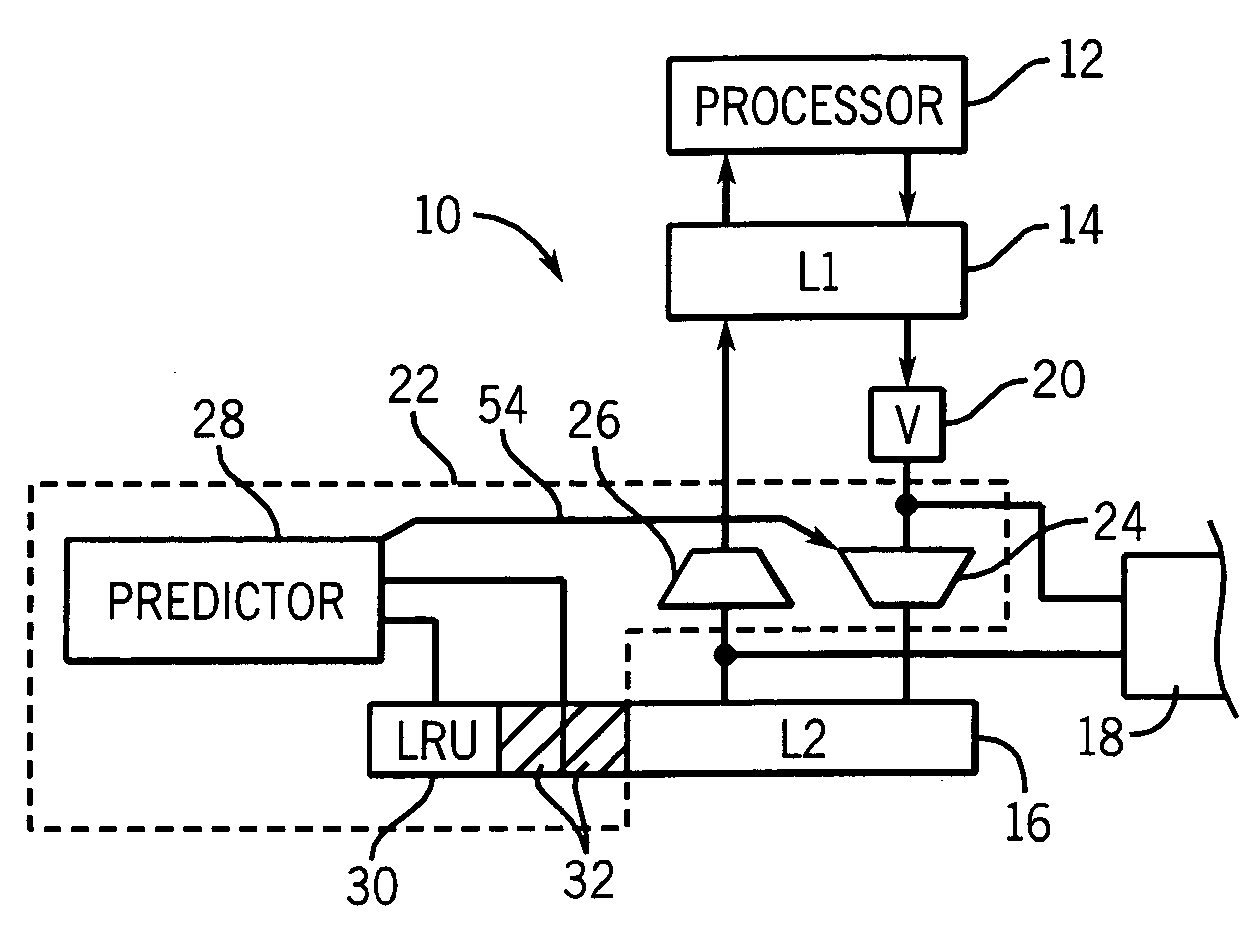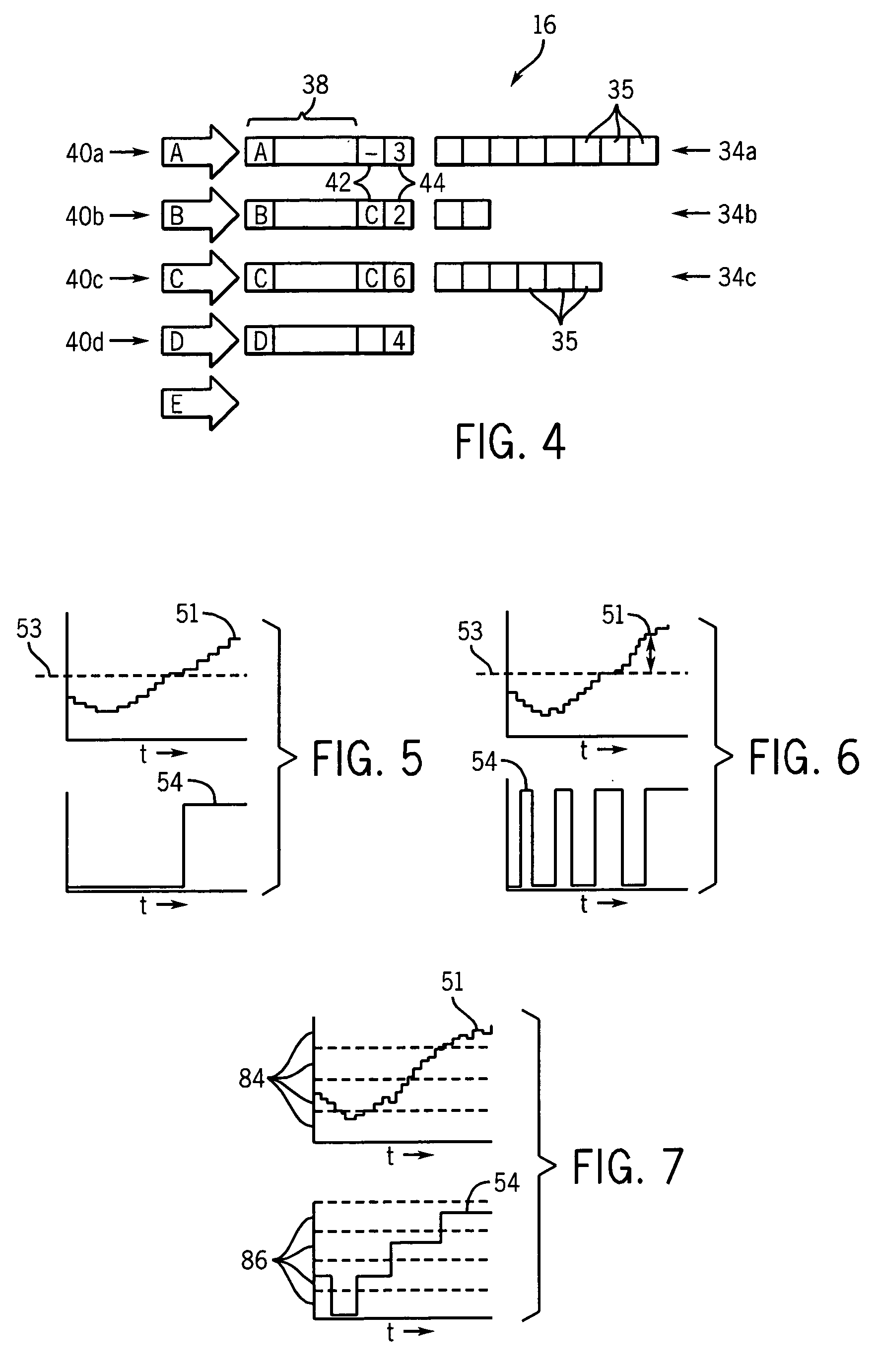Adaptive cache compression system
a compression system and cache technology, applied in the field of cache memories, can solve the problems of slow access to cache data, limit the size of cache memory, and increase so as to reduce the burden of decompression and be ready to implement
- Summary
- Abstract
- Description
- Claims
- Application Information
AI Technical Summary
Benefits of technology
Problems solved by technology
Method used
Image
Examples
Embodiment Construction
[0039] Referring now to FIG. 1, a computer system 10 may include a processor 12 operating on stored program instructions and data.
[0040] The instructions and data may be provided to the processor 12 from an L1 cache 14 which may have separate sections for instructions and data according to methods well known in the art. For clarity, instructions and data will henceforth be referred to collectively as data.
[0041] The L1 cache may in turn receive data from the L2 cache 16 or directly from a main memory 18. The L1 cache may expel data to a victim cache 20. The victim cache 20, in turn, may expel data to the L2 cache 16 or to main memory 18.
[0042] Normally, the communication between the processor 12 and main memory 18 takes longer than the communication between the processor 12 and the L2 cache 16. Accordingly, the cache L2 will be loaded from main memory 18 to try and reduce access time for requests by processor 12 of data from main memory 18.
[0043] The L2 cache may include a last ...
PUM
 Login to View More
Login to View More Abstract
Description
Claims
Application Information
 Login to View More
Login to View More - R&D
- Intellectual Property
- Life Sciences
- Materials
- Tech Scout
- Unparalleled Data Quality
- Higher Quality Content
- 60% Fewer Hallucinations
Browse by: Latest US Patents, China's latest patents, Technical Efficacy Thesaurus, Application Domain, Technology Topic, Popular Technical Reports.
© 2025 PatSnap. All rights reserved.Legal|Privacy policy|Modern Slavery Act Transparency Statement|Sitemap|About US| Contact US: help@patsnap.com



